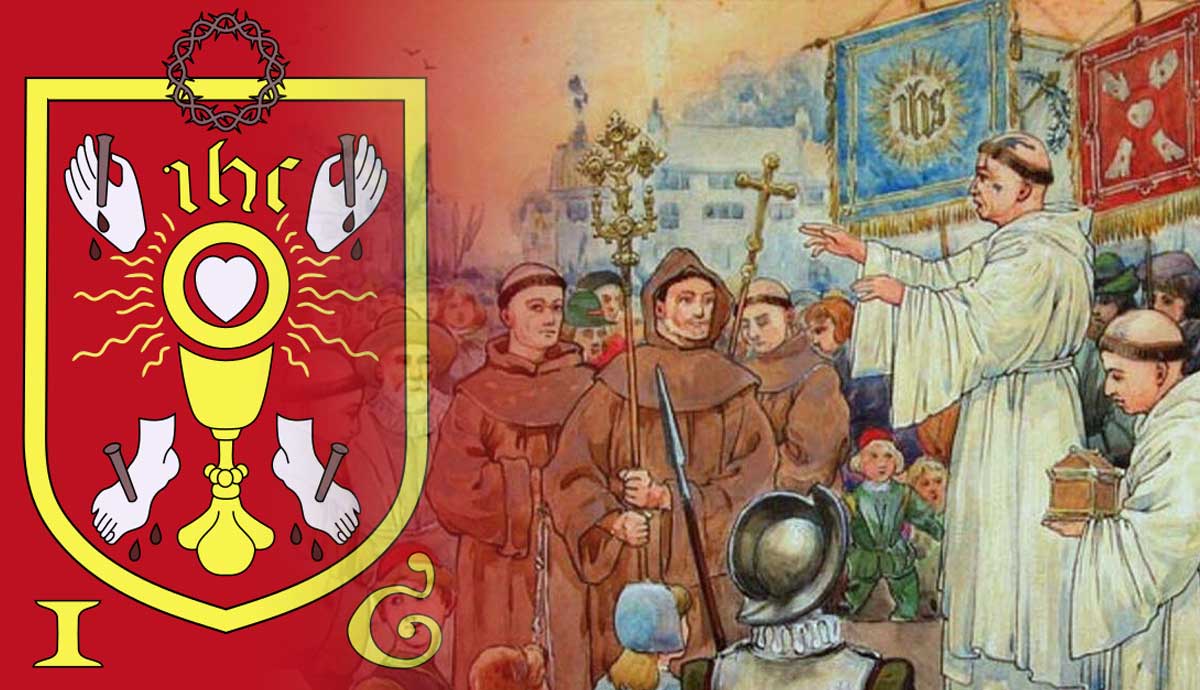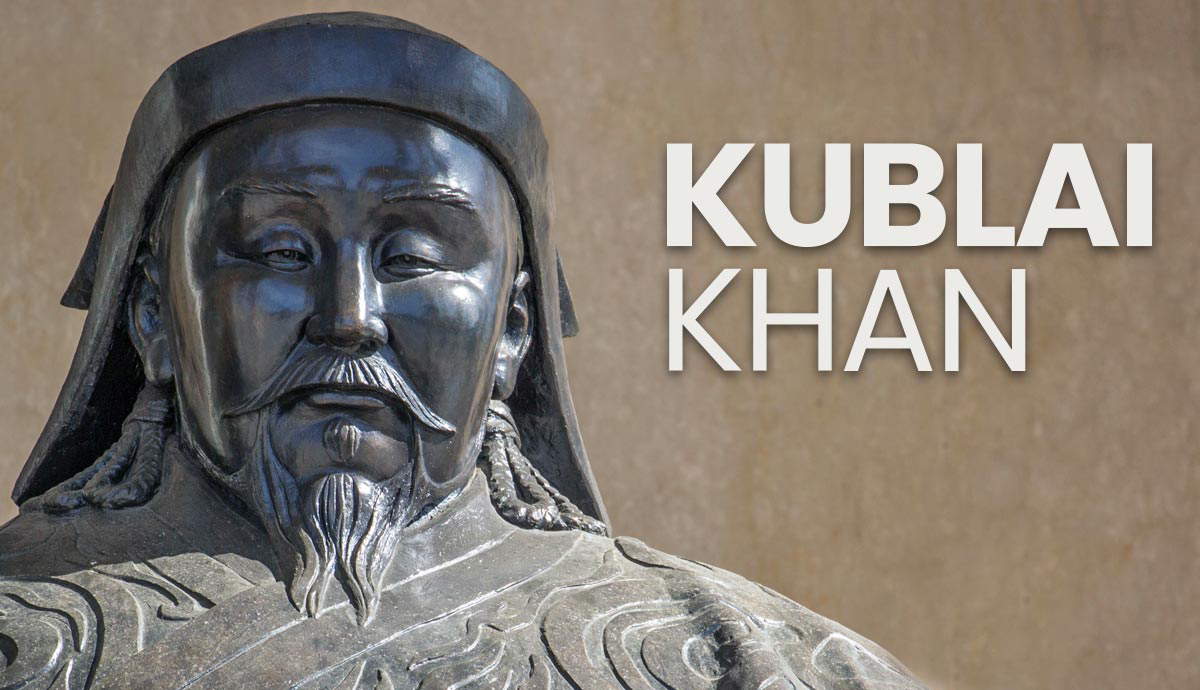
Rebellions and revolts have long been a part of human history. From the dawn of civilization, humans have always found a way to protest against their governments — and the Tudor era was no different. Henry VIII’s reforms to the Catholic Church were not just shocking to the Pope, but to many of the people of England — and that is exactly what sparked the Pilgrimage of Grace.
Background to the Pilgrimage of Grace

The Pilgrimage of Grace occurred in England over a period of around four months, from October 1536 until February 1537. It occurred during the middle of Henry VIII’s reign — three years after his marriage to his first wife, Catherine of Aragon, had formally been annulled, two years since Henry had formed the Church of England after the Break with Rome, and the same year that his second wife, Anne Boleyn, was beheaded.
To say that these were tumultuous times is an understatement. On top of the religious factors, there were also a number of economic and political grievances that led to a rebellion starting in the north of England, which came to be known as the Pilgrimage of Grace.
Religious Causes of the Pilgrimage of Grace

As mentioned, the religious causes of the Pilgrimage of Grace were a key factor. Northern England was still a Catholic stronghold, despite Henry’s English Reformation. Following the Break from Rome, Henry had established himself as Supreme Head of the Church of England, and aimed to move toward Protestantism and away from Catholicism.
One reason that the north was still a Catholic stronghold was because it was far from London, and Henry’s influence could not be felt so strongly this far afield — although this was to change in early 1535 when Henry passed the First Suppression Act, parliamentary legislation that started the dissolution of the monasteries.
The dissolution of the monasteries was a series of Church reforms, whereby Henry dissolved monasteries, convents, priories, and friaries throughout England, Ireland, and Wales. He took away (or rather redirected to the Crown) their income, and stripped them of their assets.
There were two main reasons behind this: firstly, it was to establish Henry VIII’s control over the Church. Secondly, it was to fund his foreign wars, mainly centered on France at the time.
As a result, many of the monasteries in northern England were dissolved in 1535 and early 1536. The ruins of these once-magnificent buildings can still be seen today scattered across the country.
Political Causes of the Pilgrimage of Grace

The political reasons for the Pilgrimage of Grace tie in with the religious reasons. Henry VIII’s decision to annul his marriage to Catherine of Aragon was partially politically motivated.
One reason that Henry had cited for the divorce was that he needed a male heir — something that (in his view) Catherine had been unable to provide for him. A male heir (once again, in Henry’s view) would stabilize his reign, and ensure that there was a future for the Tudor dynasty. This problem came to be referred to as Henry’s “Great Matter” — his obsession with a male heir.
Many people who were Catholics like Catherine of Aragon were disgusted at Henry’s treatment of his wife during the divorce proceedings. In addition, because Catherine and Henry’s daughter Mary Tudor was a Catholic, many northern Catholics wanted to ensure that the Catholic Mary would succeed Henry, rather than her Protestant half-sister Elizabeth, who he had fathered with his second wife, Anne Boleyn, by this time.
Economic Causes of the Pilgrimage of Grace

As with most rebellions, there were also economic grievances associated with the Pilgrimage of Grace. Henry VIII had foreign wars to fund — and one way of doing this was by raising taxes. Similar to the Peasants’ Revolt two centuries earlier, the poorest members of society were the ones most affected. During Henry’s VIII’s kingship, many of these people lived in the north of England.
Furthermore, “enclosure” was a process that had started under Henry VII but had been continued during Henry VIII’s reign. This was when members of the nobility who were also private landlords had the right to fence off land that had traditionally belonged to peasants.
With the financial burden of increased taxation and less land available to make a living from, it is not hard to see why the northern peasants rose up during the Pilgrimage of Grace.
The Lincolnshire Rising

The very first uprisings started in early October 1536, in the town of Louth, Lincolnshire. This came to be known as the “Lincolnshire Rising,” and it would eventually develop into the Pilgrimage of Grace in the coming weeks.
The man who is often credited with starting the Lincolnshire Risings was called Nicholas Melton. He was a local cobbler from Louth, and due to his discontent at Henry VIII and Thomas Cromwell’s Reformation policies, he grabbed a registrar, burned his papers, and attempted to force priests to swear an oath of loyalty.
Rather than simply being put down, due to the support for Melton, his story attracted thousands of local supporters, who rallied to his cause. A plan was drafted for these rebels to march on Lincoln to protest against the desecration of the monasteries.
However, the general feeling of anger soon turned violent, when a man called John Raynes, the chancellor of the Diocese of Lincoln, was forcibly dragged from his bed and beaten bloody by the mob.
Part of the demands from the Lincolnshire rebels was that Henry VIII and Cromwell put an end to the dissolution of the monasteries, as well as an end to the collection of subsidies, both of which naturally threatened the Catholic Church.
Of course, Henry VIII was furious when he heard about the uprisings. He was even reported to have described Lincolnshire as “one of the most brute and beastly [counties] of the whole realm.”

Henry sent Charles Brandon, 1st Duke of Suffolk, north to Lincolnshire to suppress the rebellion. While many of the protestors were simply dispersed, one man who was not so fortunate was Nicholas Melton.
He was hanged at Tyburn for his involvement, in a move which Henry VIII anticipated would make an example of him to any future rebels. Clearly, this did not work, and Melton was viewed as an ambassador to those in the neighboring counties of Yorkshire.
Robert Aske’s Rebellion in Yorkshire

From October 14, a rebellion began to stir in Yorkshire, after locals heard the news of the Lincolnshire Rising being suppressed. One of the key figures of the Pilgrimage of Grace was Robert Aske, a lawyer, who had returned to his native Yorkshire after practicing in London.
Aske himself was a devoted Catholic, so naturally the Henrician reforms went against almost everything he believed in. Because of his noble stock—he was from the de Clifford family, and loosely related to Jane Seymour—he was seen as the ideal leader. What must have been worrying for Henry, though, was that a member of the nobility was leading a rebellion of the common people.
The difference between the Lincolnshire Risings and those in Yorkshire which came to be termed as the Pilgrimage of Grace, was that the Yorkshire risings were not localized, and they garnered more support. On October 24, Aske marched into York along with 30,000 supporters.
One of Aske’s requirements was that he wanted the monks and nuns who had been forcibly removed from their monasteries and convents to be restored in place of the private tenants Henry VIII had installed. The rebels also compiled a long list of other demands in the meantime, many of which were requests to overturn Henry and Cromwell’s Protestant reforms.
The number of Aske’s supporters kept on growing and Henry eventually sent the retired Thomas Howard, 3rd Duke of Norfolk, north to deal with the rebels. All Howard managed to do was delay them a bit — by early November they had taken over Pontefract Castle.
The Pontefract Articles

One of the most shrewd moves that the Duke of Norfolk made was to grant Aske an audience with Henry VIII, which he arranged for the Christmas period of 1536. The reason for this was because it separated Aske from his followers, many of whom then dispersed, which in the long run made the rebellion easier to suppress.
Aske discussed his demands with Norfolk and was given a safe passage in order to do so. There were 24 demands in total, nine of which were strictly religious. The rebels demanded an end to enclosure, as well as a return to papal authority. Perhaps the most significant demand was that they wanted a parliament to be held in the North.
Aske took Norfolk’s word for it that these vague promises would be met, and made his way back north. In turn, he asked for the rebels to make attempts to de-escalate any tensions.
Bigod’s Rebellion

Sir Francis Bigod, a nobleman from Yorkshire, has sometimes been cited as the reason behind the downfall of the Pilgrimage of Grace, although this is quite a loose claim. When Aske returned and asked the rebels to de-escalate tensions, Bigod ignored him and attempted to stir up further rebellions in Cumberland and Westmorland in early 1537.
Aske had already negotiated with Norfolk at this point and still made attempts to stop people from supporting Bigod but to little avail. Bigod’s rebellion gave Norfolk and Henry the excuse they needed to send royal forces north and formally put an end to the Pilgrimage of Grace.
The Suppression of the Pilgrimage of Grace

Because many of Aske’s supporters had begun to disperse by Christmas 1536, they were only found in smaller groups by early 1537. This made it much easier for royal forces to deal with them — rather than the 30,000 strong force they had been in mid-October of the previous year.
It was an easy victory for Henry in the end, who managed to not only put the rebellion to its formal end, but also ensured that over 200 people were executed for their involvement in the rebellion, including Robert Aske.
Aske was captured, imprisoned in the Tower of London, before being convicted of high treason and taken back up north where he was hanged, reportedly in chains, outside of Clifford’s Tower in York.
The Legacy of the Pilgrimage of Grace

The Pilgrimage of Grace was the biggest anti-Reformation movement in Tudor history, and has been cemented in English history as one of the most popular rebellions of all time — it is certainly on par with the Peasants’ Revolt of 1381.
The immediate effect of the Pilgrimage of Grace shows how many people opposed the Henrician Reforms in Tudor England. From the impact of the dissolution of the monasteries, to subsidy collections and the forced removal of monks and nuns, there were a multitude of factors which contributed to the Pilgrimage of Grace.
The Pilgrimage of Grace had also been cited as a reason for further anti-Reformation rebellions, some of which occurred in the reigns of later Tudors, such as the Prayer Book Rebellion (1549) during Edward VI’s reign and the Northern Rebellion (1569) under Elizabeth I.
Without the impact of the Pilgrimage of Grace, it is highly unlikely that further rebellions would have taken place. While the rebels themselves were not successful, it was nevertheless a moment that showed where Henry VIII’s and Cromwell’s vulnerabilities lay.











